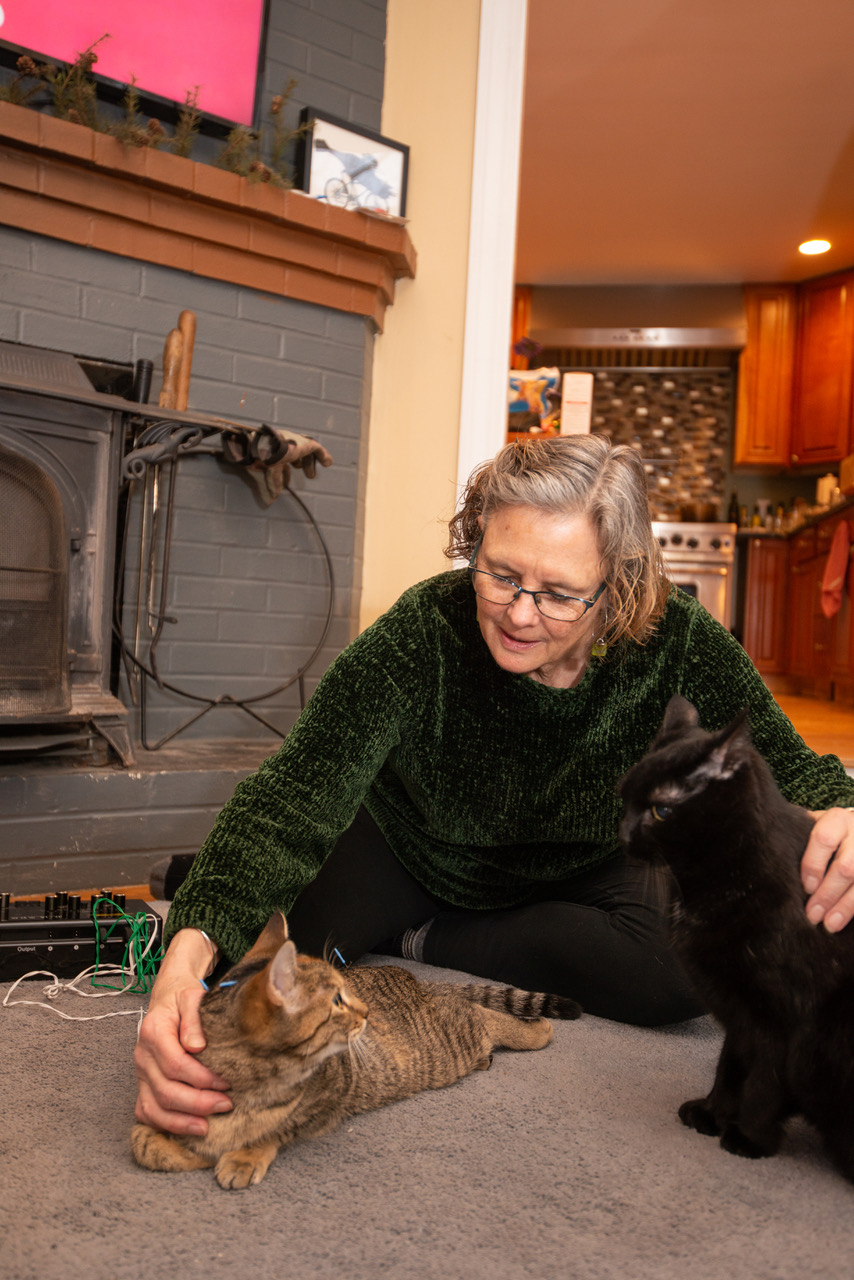New Patient Information
Thank you for your interest in veterinary alternative medicine. This information is intended to familiarize you with Traditional Chinese Veterinary Medicine (TCVM) so that some of your questions may be answered and you know what to expect at your first visit.
TCVM is just one of many modalities used in integrative medicine. It is comprised of five branches, including Acupuncture, Herbal Medicine, Food Therapy, Tui-na (Chinese Therapeutic Massage), and exercise. All branches are utilized as appropriate, to treat each case.
Please fill out the Patient History Form prior to your visit.
The Goal of Traditional Chinese Veterinary Medicine
When the life force is strong, and there is harmony and balance in the body, there is health. When the body becomes out of balance due to factors such as infections, emotional stress, environment, nutrition, toxins or genetics, there is disease. The goal of TCVM is to help the body heal itself and restore complete health. If cure is not possible, the goal is to help the body be in harmony with the disease. Many patients can enjoy life in spite of their disease.
Acupuncture can be combined successfully with conventional veterinary medicine to enlist hte patient’s natural healting mechanisms. An integrative approach for many patients can help reduce the duration of hospitalization and improve outcomes. It can also improve quality of life of many of our senior patients with chronic deebilitating conditions by improving mobility and reeducing pain. It can replace Western medications when animals cannot take them due to kidney, liver or stomach disease. Acupuncture can support and improve organ disease when Western medicine has little to offer.
At the first visit, your pet’s physical, mental, and emotional symptoms will be evaluated by obtaining a history, reviewing previous conventional diagnostic tests and treatments, and by performing a physical exam. A pattern of imbalance or diagnosis is determined, and a treatment plan is developed and presented at the second visit. The treatment plan consists of herbal, food therapy, and Tui-na recommendations. A first acupuncture treatment is included in the first visit.
COVID-19
I will wear a mask to your home and ask that anyone that will be present during the appointment do the same. This reduces the risk of spread for both of us and allows me to continue providing services to all of my patients in a responsible way.
Frequently Asked Questions
How long is an Acupuncture appointment?
The first appointment generally takes 1.5-2 hours and includes a consultation, examination and is followed by the first acupuncture treatment. Follow up acupuncture appointments are approximately 1 hour as well. Please fill out our online forms and have your veterinarian fax or email the medical records/x-rays for Dr. Toolan’s review prior to your first visit.
How long does it take for acupuncture to work?
The effects of acupuncture are cumulative, such that a sequence of treatment sessions is recommended. Frequency of treatment sessions will vary with each patient and disease. Acupuncture can take 3-5 treatments before changes are seen, so it is important to commit to a schedule in order for the treatments to have the desired effects.
Is Acupuncture painful?
Is Herbal Medicine safe?
What is Food Therapy?
In TCVM, Food Therapy is used to help balance the body’s energy. As an example, if an animal is too hot, cooling foods are recommended; if the animal is cold, warming foods are recommended. Food recommendations are specific to each animal’s needs. These can be added as a supplement or topping to the current diet or grouped together in a recipe and fed as the sole diet.
The effects of Food Therapy are slower than acupuncture of herbal medicine, but work with these modalities to balance the body. Finally, owners enjoy being able to participate in and contribute to the healing process of their pet.
What is Tui-na?
Tui-na, or Chinese Therapeutic Massage, was first practiced in China in 1600 BC. The formal name, Tui-Na-An-Mo, is known by various names depending on the region in China and the techniques in popular use there. Tui-na, as it is known in South China, refers to pushing and lifting techniques, while in northern China the term An-Mo is used to refer to acupressure, massage and other specialized techniques.
It is used in Traditional Chinese Medicine (TCM) and Traditional Chinese Veterinary Medicine (TCVM) to enhance the effects of the other branches of acupuncture and herbal lmedicine to treat and prevent disease. Specifically, the techniques used can help balance the body’s energy by tonifying areas that are deficient and sedating areas that are in excess. Also, in TCVM, where there is pain in the body there is a blockage of Qi and blood circulation. Tui-na techniques unblock and improve circulation of Qi and blood and thereby reduce pain. They can also improve organ and immune system function.
In my practice, I use Tui-na three ways:
- Prior to acupuncture, I will do a short session to help soften and loosen the tissues.
- I can do an entire session of just Tui-na. Some pets do not like the acupuncture needles but enjoy the Tui-na techniques. I will also do acupuncture in one area of the body and Tui-na in another area or for another problem.
- Finally, many owners would like to be able to do more to help their pets. The owner can be taught a few techniques appropriate to their pet’s condition. These can be done daily at home in between appointments.


